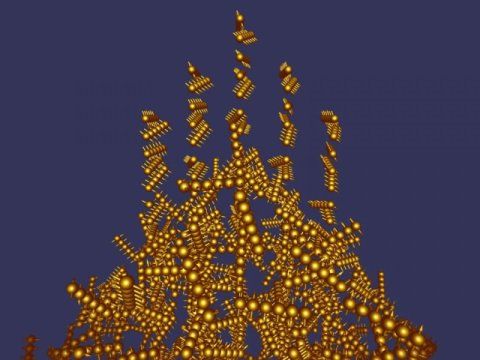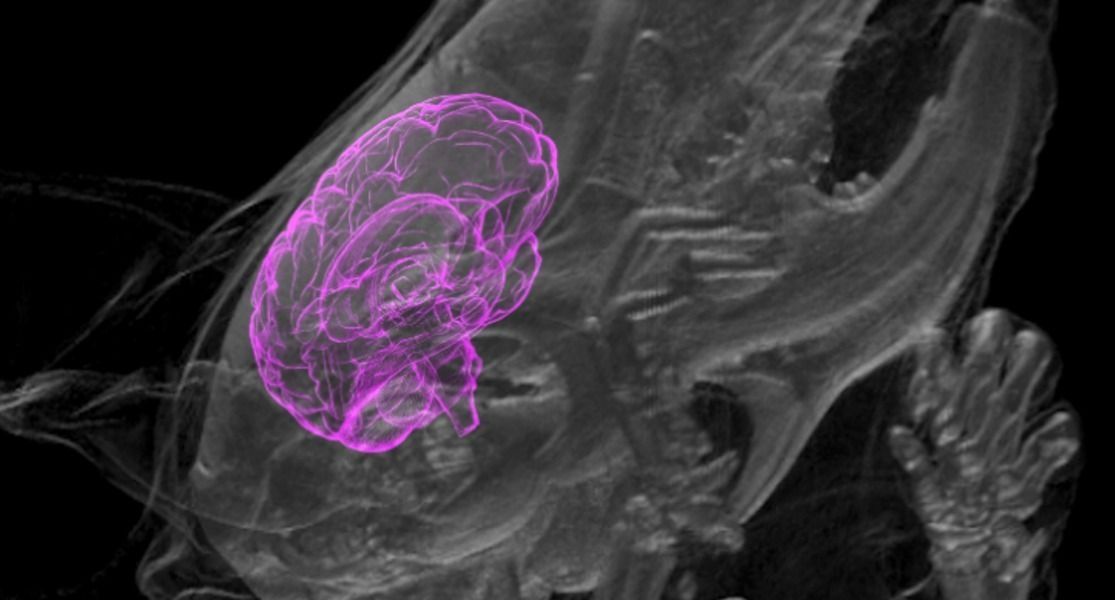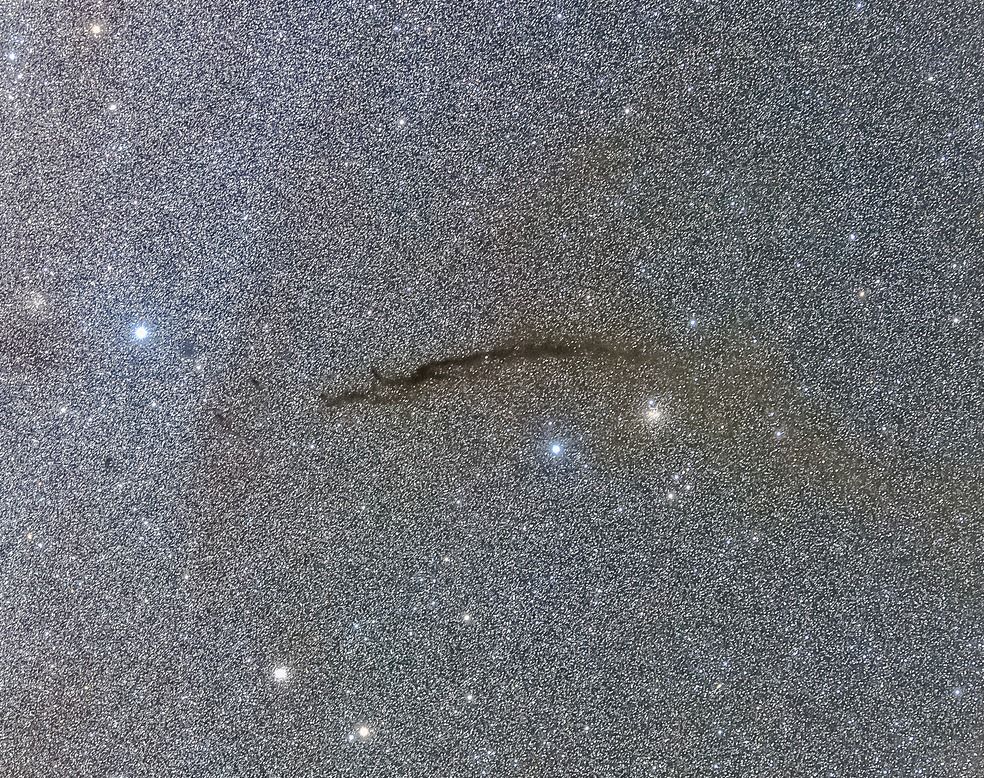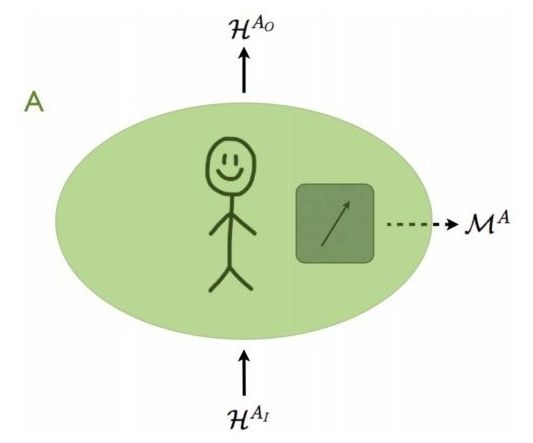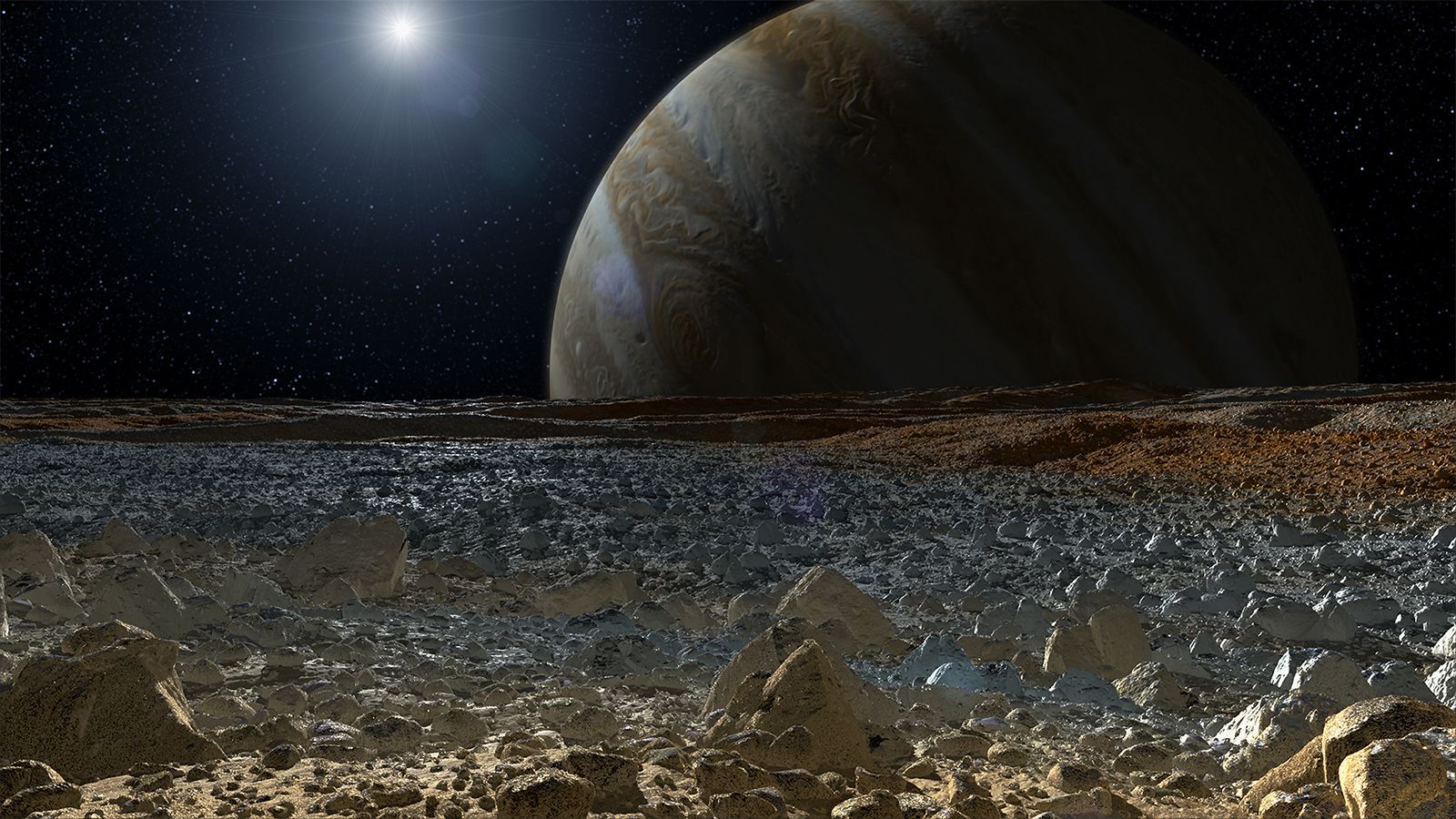New research gives insight into a recent experiment that was able to manipulate an unprecedented number of atoms through a quantum simulator. This new theory could provide another step on the path to creating the elusive quantum computers.
Stem cell technology has advanced so much that scientists can grow miniature versions of human brains — called organoids, or mini-brains if you want to be cute about it — in the lab, but medical ethicists are concerned about recent developments in this field involving the growth of these tiny brains in other animals. Those concerns are bound to become more serious after the annual meeting of the Society for Neuroscience starting November 11 in Washington, D.C., where two teams of scientists plan to present previously unpublished research on the unexpected interaction between human mini-brains and their rat and mouse hosts.
In the new papers, according to STAT, scientists will report that the organoids survived for extended periods of time — two months in one case — and even connected to lab animals’ circulatory and nervous systems, transferring blood and nerve signals between the host animal and the implanted human cells. This is an unprecedented advancement for mini-brain research.
“We are entering totally new ground here,” Christof Koch, president of the Allen Institute for Brain Science in Seattle, told STAT. “The science is advancing so rapidly, the ethics can’t keep up.”
Long before our Sun formed it was nothing more than a bunch of material floating listlessly in a large cloud of gas, dust, and debris. These space clouds, called nebulas, are where stars and planets are born, eventually coalescing into larger bodies which become slaves to gravity and form systems such as the one we currently reside in. But what factors affect star and planet formation, and what ultimately determines the type of stars that form? Using observations of one very special nebula, scientists now think have begun to understand.
One of the biggest hurdles in studying these molecular space clouds is that telescopes can only produce a 2D picture of them, making it impossible to model the interior structure and movements of the dust and gasses. Researchers focused on the cloud known as Musca, which lies hundreds of light years away from Earth, but is still close enough to study. The scientists discovered that this particular cloud is “singing.”
There are potentially active volcanoes all over the West and Alaska as well as Hawaii, and about 50 are considered high priorities for monitoring. Here is where to find them.
A plume of volcanic ash rose above the island of Hawaii on May 4. The long-running eruption of the Kilauea volcano, one of the most active in the United States, has destroyed houses and forced evacuations. Credit U.S. Geological Survey, via Associated Press.
In a paper published Monday in the journal Proceedings of the National Academy of Sciences, researchers demonstrated that the virus could infect human cells as well as the cells of cats and chickens. Even though PDCoV appears to be limited to pigs at the moment, scientists suspect that its sudden appearance in 2012 occurred as a result of a rapid “host switching” event in which the virus adapted to infect pigs, possibly from birds. It causes diarrhea and vomiting in pigs and can be fatal, especially in nursing young. The virus’s probable history, coupled with some specific aspects of how it infects cells, has scientists worried that it could become a threat to human health.
Article continues below.
Quantum theory is based heavily on probabilities, since measuring a quantum system doesn’t produce the same outcome every time, but instead yields one of many outcomes that each occur with a certain probability. Now in a new paper, physicists have presented a new quantum probability rule for assigning probabilities to measurement outcomes, or events, that essentially combines two of the most important quantum probability rules (the Born rule and the wave function collapse rule) into one.
The physicists, Sally Shrapnel, Fabio Costa, and Gerard Milburn, at The University of Queensland in Australia, have published a paper on the new quantum probability rule in the New Journal of Physics.
One of the most important probability rules in quantum theory is the Born rule, which gives the probability that a measurement yields a certain event. However, things get a little bit more complicated when predicting consecutive events. Although in classical scenarios it’s possible to assign joint probabilities to consecutive events using conditioning, in quantum scenarios this is not possible since each measurement necessarily disturbs the system. So in quantum mechanics, the state must be updated with this new information after every measurement.
Sometimes, scientists have the answers all along—they just don’t think to ask the question. For example, it appears that in 1997, the Galileo orbiter flew through a jet of water shooting out from Jupiter’s moon Europa without even trying.
Scientists think that Europa has an ocean below its icy surface, which could be a big deal. When we hear water, we think “life,” and maybe life found a way in Europa’s ocean. Recent Hubble space telescope images appeared to show evidence for this ocean in the form of plumes of water shooting forth from cracks in the moon’s surface ice. So, a team of researchers in the U.S. thought, maybe there’s more evidence for these plumes elsewhere, like in 20-year-old data from the Galileo orbiter.
“This wasn’t planned out,” study author Xianzhe Jia from the University of Michigan told Gizmodo. “It just so happened that the spacecraft passed through a region where we saw plumes. It was fortuitous.”
According to the current dominant theory, if there are other universes out there, they’re not likely to have life. But now an international team of researchers has demonstrated that the Multiverse is more hospitable than we thought.
The Multiverse hypothesis — wherein our observable Universe is just one of many universes — is a proposed explanation for the not-large-enough amount of dark energy in the empty space in our Universe.
We don’t really know what dark energy is — it’s the name we give to the force that drives the expansion of our Universe, which, contrary to pretty much everything else we observe, accelerates over time instead of slowing down.
